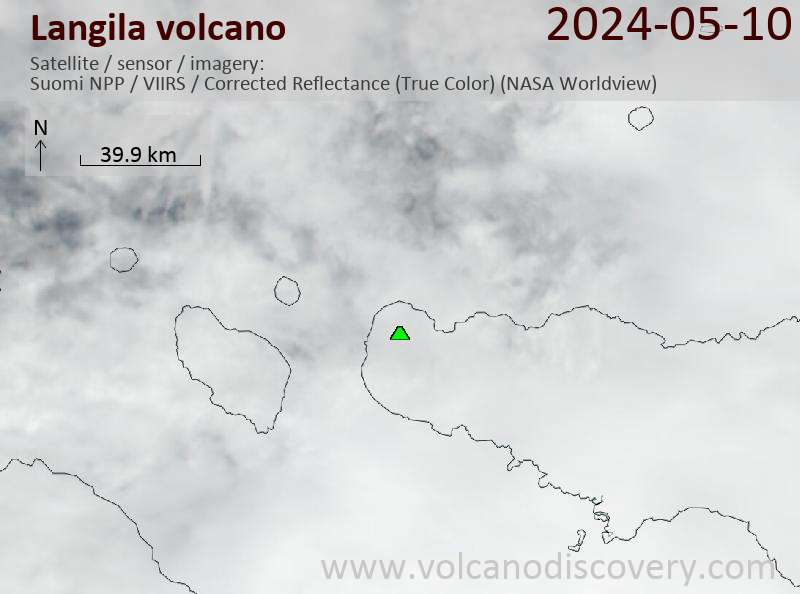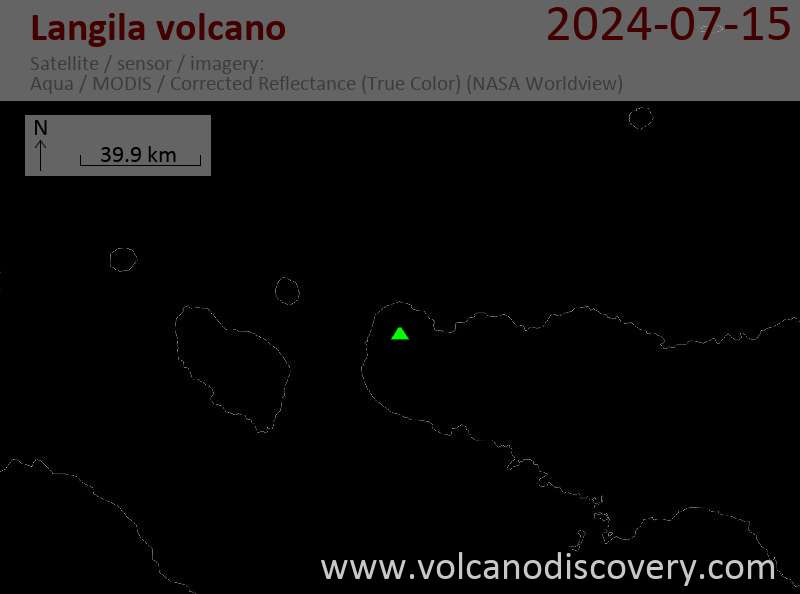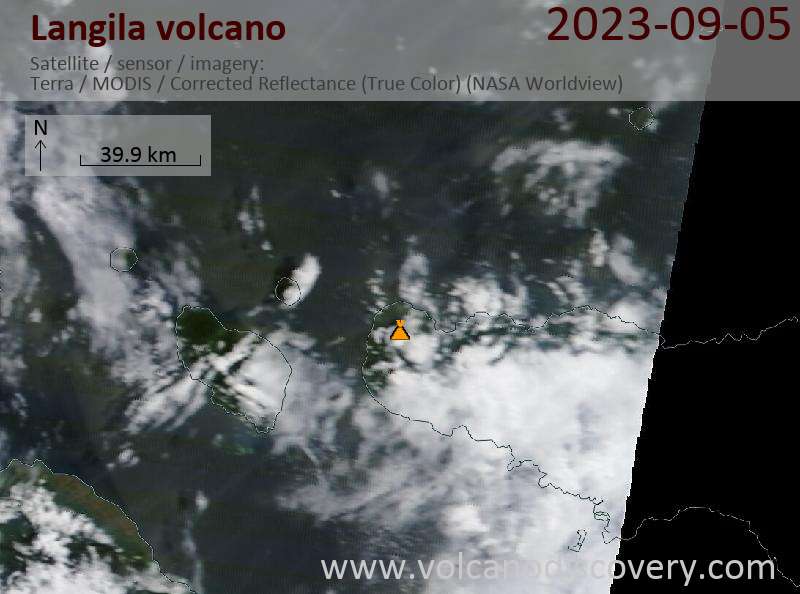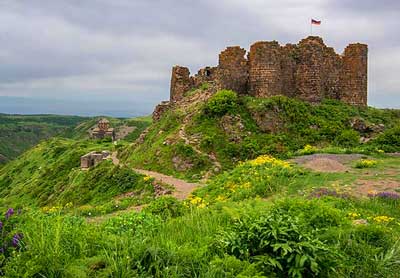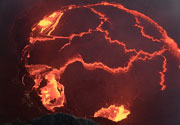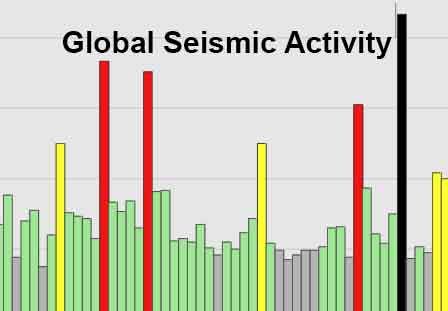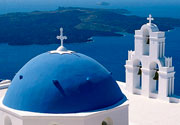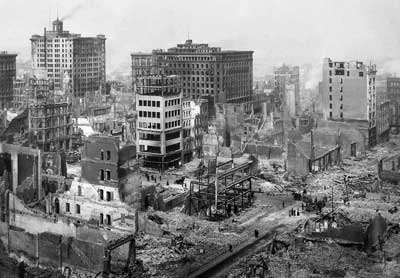Langila Volcano
Updated: Apr 27, 2024 07:25 GMT -
stratovolcano 1330 m / 4,363 ft
New Britain, Papua New Guinea, -5.53°S / 148.42°E
Current status: normal or dormant (1 out of 5)
New Britain, Papua New Guinea, -5.53°S / 148.42°E
Current status: normal or dormant (1 out of 5)
Last update: 5 Nov 2023 (Volcanic Ash Advisory)
Langila volcano is one of the most active volcanoes in the Bismarck Arc of New Britain. It is located 11 km south of Cape Gloucester.
The volcano consists of a group of 4 small overlapping basaltic-andesitic cones on the lower eastern flank of extinct Talawe volcano, which still forms the highest volcano in the Cape Gloucester area of NW New Britain.
Langila's typical activity is strombolian to vulcanian explosions, sometimes accompanied by lava flows. Summit explosions at Langila volcano often produce shock waves.
[smaller] [larger]
Langila volcano eruptions: 2009-2013, 2002-08, 1973-2000, 1971-72, 1970, 1969, 1967-68, 1964-66, 1962-63, 1960-61, 1958, 1956, 1955, 1954, 1942 (?), 1907, 1900, 1890, 1884, 1878
Latest nearby earthquakes
| Time | Mag. / Depth | Distance / Location | |||
Background
Langila is the successor of Mt Talawe volcano. Over time, the active vents have migrated eastwards and built a new volcano, Langila. Talawe has a rectangular, 2.5-km-long crater open to the SE; Langila volcano was constructed NE of the breached crater.There are 3 active craters at the summit of Langila, where frequent activity has taken place in the past centuries:
Crater 1 (1220 m elevation) has a diameter of 460 x 380 m.
Crater 2 (1120 m) with a diameter of 330 m is the most active vent in recent years.
Crater 3 (1060 m) formed as recently as 1960. It is the youngest and smallest crater (160 m diameter).
An older crater, Munlulu (1330 m), is still the highest and has a diameter of 550 m.
An extensive lava field reaches the coast on the north and NE sides of Langila.
---
Sources:
- Smithsonian / GVP volcano information
- R. F. Hemming (1974) "Geology and Petrology of Rabaul Caldera, Papua New Guinea", GSA Bulletin, v. 85 (8), pp. 1253-1264
- Powell, Wilfred (1883) "Wanderings in a Wild Country, or, Three Years Amongst the Cannibals of New Britain.", London: Sampson Low, Marston, Searle and Rivington.
- Mori et al (1989) "Seismicity associated with eruptive activity at Langila volcano, Papua New Guinea", Journal of Volcanology and Geothermal Research
Volume 38, Issues 3-4, Pages 243-255
Eruptions of Langila volcano
2009 eruptions
Strong ash explosions of vulcanian type were recorded from crater 2 during 20-24 September 2009. Plumes rose 2,000-3,000 m above the crater rim. Lightning could be observed in the ash column at night.
A deep magnitude 5.3 earthquake occurred near Langila in on 5 October, but is unrelated to volcanic activity.
Strong ash explosions of vulcanian type were recorded from crater 2 during 20-24 September 2009. Plumes rose 2,000-3,000 m above the crater rim. Lightning could be observed in the ash column at night.
A deep magnitude 5.3 earthquake occurred near Langila in on 5 October, but is unrelated to volcanic activity.
1983 violent eruptions
After a gradual increase throughout December 1982, violent activity including vulcanian explosions producing ash columns reaching several kilometers height were frequent at Langila volcano in 1983. ...more info
After a gradual increase throughout December 1982, violent activity including vulcanian explosions producing ash columns reaching several kilometers height were frequent at Langila volcano in 1983. ...more info
1982 eruptions
Craters 2 and 3 were very active in January and February 1982, producing strombolian and vulcanian eruptions, and a lava flow from crater 3 towards the end of January.
Strong Strombolian activity and a lava flow occurred from crater 2 in May. Activity decreased in summer and gradually picked up after August. 2 large Vulcanian explosions were observed from Crater 2 on 12 and 22 November.
Craters 2 and 3 were very active in January and February 1982, producing strombolian and vulcanian eruptions, and a lava flow from crater 3 towards the end of January.
Strong Strombolian activity and a lava flow occurred from crater 2 in May. Activity decreased in summer and gradually picked up after August. 2 large Vulcanian explosions were observed from Crater 2 on 12 and 22 November.
1981 eruptions
Activity at Langila decreased during the first 3 months of 1981, and picked up again in April, when occasional explosions were noted from crater 2. In June and July, incandescent material was seen ejected from crater 2. Some stronger explosions produced ashfall 10 km from the volcano. In November 1981 crater 2 had strombolian activity and occasional powerful explosions, resulting in small pyroclastic flows. (GVP monthly reports)
Activity at Langila decreased during the first 3 months of 1981, and picked up again in April, when occasional explosions were noted from crater 2. In June and July, incandescent material was seen ejected from crater 2. Some stronger explosions produced ashfall 10 km from the volcano. In November 1981 crater 2 had strombolian activity and occasional powerful explosions, resulting in small pyroclastic flows. (GVP monthly reports)
1980 eruptions
A new crater was formed on the flank of Crater 3 on 19 January. Thick brown ash emissions and incandescence were observed throughout the month.
Crater 3 produced a lava flow of 700 m length, which must have had started sometime between 28 Jan and 15 Feb. The lava flow was emitted from the new vent formed on 19 January.
The effusive & explosive activity continued during May and June. Strombolian and vulcanian explosions ejected glowing bombs to up to around 600 m, accompanied by almost continuous "roaring, rumbling and detonations" audible in up to 10 km distance. A larger explosion on 9 May produced a small base surge which traveled about 300 m W and left a pale brown deposit.
Activity decreased after June and picked up in October. Vulcanian explosions occurred from crater 2 at intervals of several minutes or more and produced ash columns reaching 3-5 km height in late October. Crater 3 had strombolian activity with ejections to up to 300 m height. A block lava flow issued from crater 3 and reached 3 km distance.
(GVP monthly reports)
A new crater was formed on the flank of Crater 3 on 19 January. Thick brown ash emissions and incandescence were observed throughout the month.
Crater 3 produced a lava flow of 700 m length, which must have had started sometime between 28 Jan and 15 Feb. The lava flow was emitted from the new vent formed on 19 January.
The effusive & explosive activity continued during May and June. Strombolian and vulcanian explosions ejected glowing bombs to up to around 600 m, accompanied by almost continuous "roaring, rumbling and detonations" audible in up to 10 km distance. A larger explosion on 9 May produced a small base surge which traveled about 300 m W and left a pale brown deposit.
Activity decreased after June and picked up in October. Vulcanian explosions occurred from crater 2 at intervals of several minutes or more and produced ash columns reaching 3-5 km height in late October. Crater 3 had strombolian activity with ejections to up to 300 m height. A block lava flow issued from crater 3 and reached 3 km distance.
(GVP monthly reports)
1979 activity
Frequent ash eruptions were observed in January, and areal surveys discovered that the new lava dome had reached the height of the crater rim but not overflown. Activity was moderate to low during the rest of the year. 10 large explosions happened on 27 September, producing ash fall reaching several millimeters at the Kilenge mission station in 10 km distance NW of Langila volcano.
Frequent ash eruptions were observed in January, and areal surveys discovered that the new lava dome had reached the height of the crater rim but not overflown. Activity was moderate to low during the rest of the year. 10 large explosions happened on 27 September, producing ash fall reaching several millimeters at the Kilenge mission station in 10 km distance NW of Langila volcano.
1977-78 activity
Mild strombolian activity and small intra-crater lava flows occurred inside crater 2 in 1977, in particular in September. This activity had ceased by mid December.
Strombolian activity re-started in late April 1978. This activity changed to vulcanian by the end of May, when crater produced 1-2 strong explosions per day. After a decrease in June or July, activity intensified in October again, when there were few, but more powerful than usual explosions.
An new active lava dome was first discovered in Crater 2 on 7 December. It produced a night glow visible from 10 km distance.
(GVP monthly reports)
Mild strombolian activity and small intra-crater lava flows occurred inside crater 2 in 1977, in particular in September. This activity had ceased by mid December.
Strombolian activity re-started in late April 1978. This activity changed to vulcanian by the end of May, when crater produced 1-2 strong explosions per day. After a decrease in June or July, activity intensified in October again, when there were few, but more powerful than usual explosions.
An new active lava dome was first discovered in Crater 2 on 7 December. It produced a night glow visible from 10 km distance.
(GVP monthly reports)
1974 eruption
An unusually large explosion was reported from Langila on 15 February 1974. It caused extensive changes to the shape of crater 2. An overflight showed continuous ash emissions from crater 2 and small eruptions from crater 3.
An unusually large explosion was reported from Langila on 15 February 1974. It caused extensive changes to the shape of crater 2. An overflight showed continuous ash emissions from crater 2 and small eruptions from crater 3.
1973 lava flow eruption
A new eruption of Langila volcano began on 12 July 1973 and lasted about 6 months into early 1974. It produced a slow, steady lava flow from crater 3. The flow had reached 1 km length and was 300 m wide when observed on 18 July. According to the Rabaul Volcano Observatory, this was only the third lava flow at Langila in the 20th century, the other being in 1960 and 1967.
---
Source: GVP / Smithsonian monthly reports
A new eruption of Langila volcano began on 12 July 1973 and lasted about 6 months into early 1974. It produced a slow, steady lava flow from crater 3. The flow had reached 1 km length and was 300 m wide when observed on 18 July. According to the Rabaul Volcano Observatory, this was only the third lava flow at Langila in the 20th century, the other being in 1960 and 1967.
---
Source: GVP / Smithsonian monthly reports





